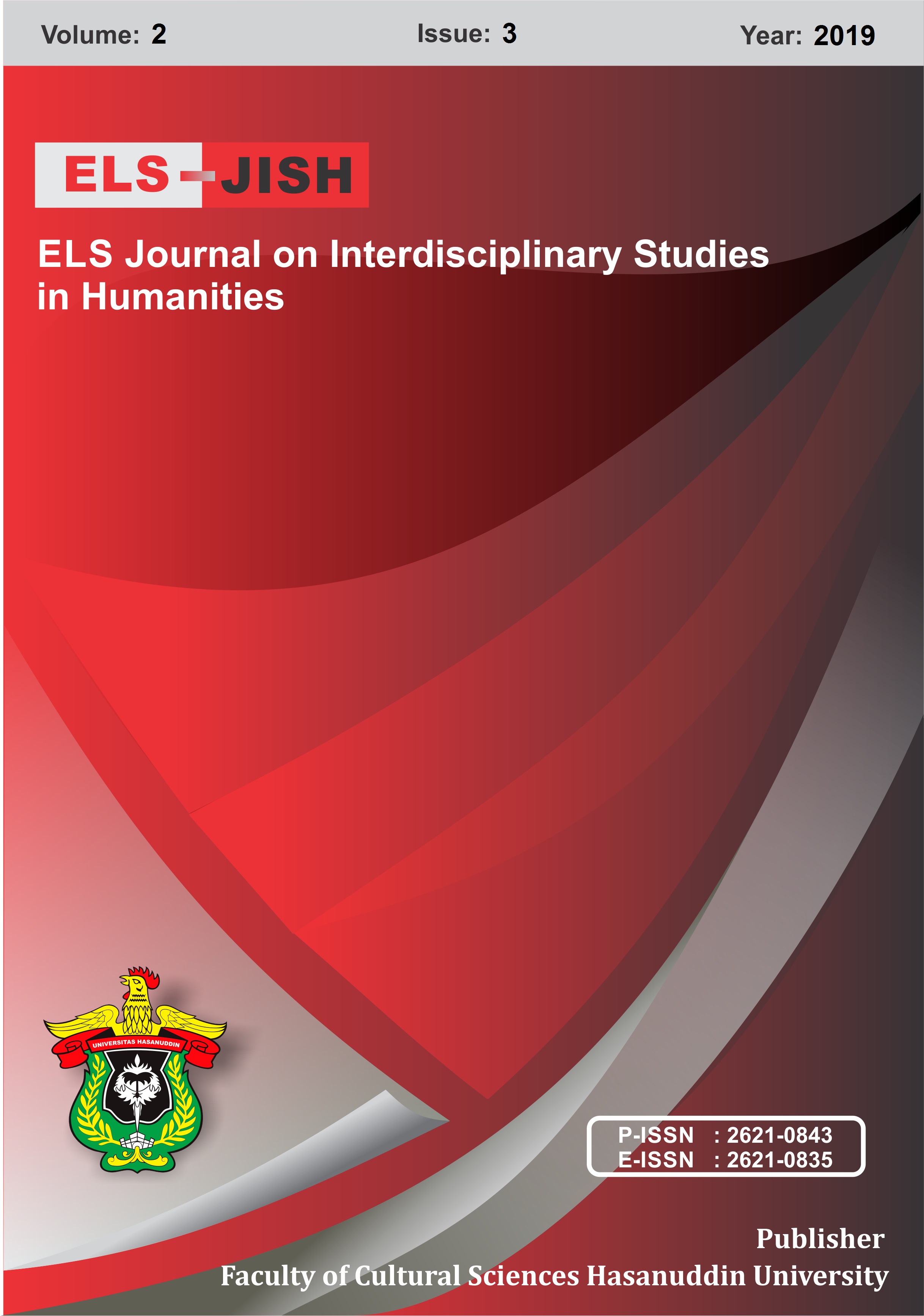Most read articles by the same author(s)
- Andi Patmasari, Agussatriana, Abdul Kamaruddin, An Investigation of the Use of Code-Switching in EFL Classroom: Attitudes and Perceptions , ELS Journal on Interdisciplinary Studies in Humanities: Vol. 5 No. 2 (2022): June
- Agussatriana Agussatriana, Developing Students’ Reading Comprehension through Think-Pair-Share Strategy , ELS Journal on Interdisciplinary Studies in Humanities: Vol. 3 No. 1 (2020): MARCH
- Anida Anida, Andi Patmasari, The Students' Perceptions of Creating Videos to Engage Them in Speaking , ELS Journal on Interdisciplinary Studies in Humanities: Vol. 1 No. 3 (2018): SEPTEMBER
- Andi Patmasari, The Use of Skit Technique in Enhancing the Students’ Speaking Ability , ELS Journal on Interdisciplinary Studies in Humanities: Vol. 3 No. 1 (2020): MARCH
- Julia Marfuah, Andi Patmasari, The Effect of Using Drama Technique towards the Students’ Speaking Accuracy, Fluency, and Comprehensibility , ELS Journal on Interdisciplinary Studies in Humanities: Vol. 3 No. 1 (2020): MARCH
Similar Articles
- Bushra Alzahrani, Khulod Alyeaish, Aljoharah Alsalamah, Rahaf Almutairi, Rawan Algahtani, Exploring Saudi EFL Students’ Attitudes Towards NES and NNES Teachers’ Accents , ELS Journal on Interdisciplinary Studies in Humanities: Vol. 5 No. 1 (2022): March
- Marleiny Radjuni, Students’ Attitudes and Perceptions of ICT: Weblog Application in Improving Methods of SCL on Writing Class 2: Online Exploration of Global Issues , ELS Journal on Interdisciplinary Studies in Humanities: Vol. 4 No. 2 (2021): JUNE
- Siti Mahdaria, Titus Angga Restuaji, The Effectiveness of Online Coaching through Social Networking Site , ELS Journal on Interdisciplinary Studies in Humanities: Vol. 4 No. 2 (2021): JUNE
- Hasrida Ardin, Social Impacts of Industrial Revolution in Charles Dickens’s Oliver Twist , ELS Journal on Interdisciplinary Studies in Humanities: Vol. 4 No. 1 (2021): MARCH
- Nur Alifah Annisa Jumrah, Mirah Azizah, The Effectiveness and Students’ Perceptions on Learning Tenses Through Mind Mapping Technique on Elementary Level at an Education and Training Institute in Indonesia , ELS Journal on Interdisciplinary Studies in Humanities: Vol. 4 No. 1 (2021): MARCH
- Lucas Tessaro, Cynthia Whissell, Facial expressions alter the fundamental sound properties of speech , ELS Journal on Interdisciplinary Studies in Humanities: Vol. 4 No. 1 (2021): MARCH
- Juliastuti Juliastuti, Character Building with Literature: Linguistic Creativity of Helen Keller in Writing Autobiography (The Story of My Life) , ELS Journal on Interdisciplinary Studies in Humanities: Vol. 2 No. 2 (2019): JUNE
You may also start an advanced similarity search for this article.






